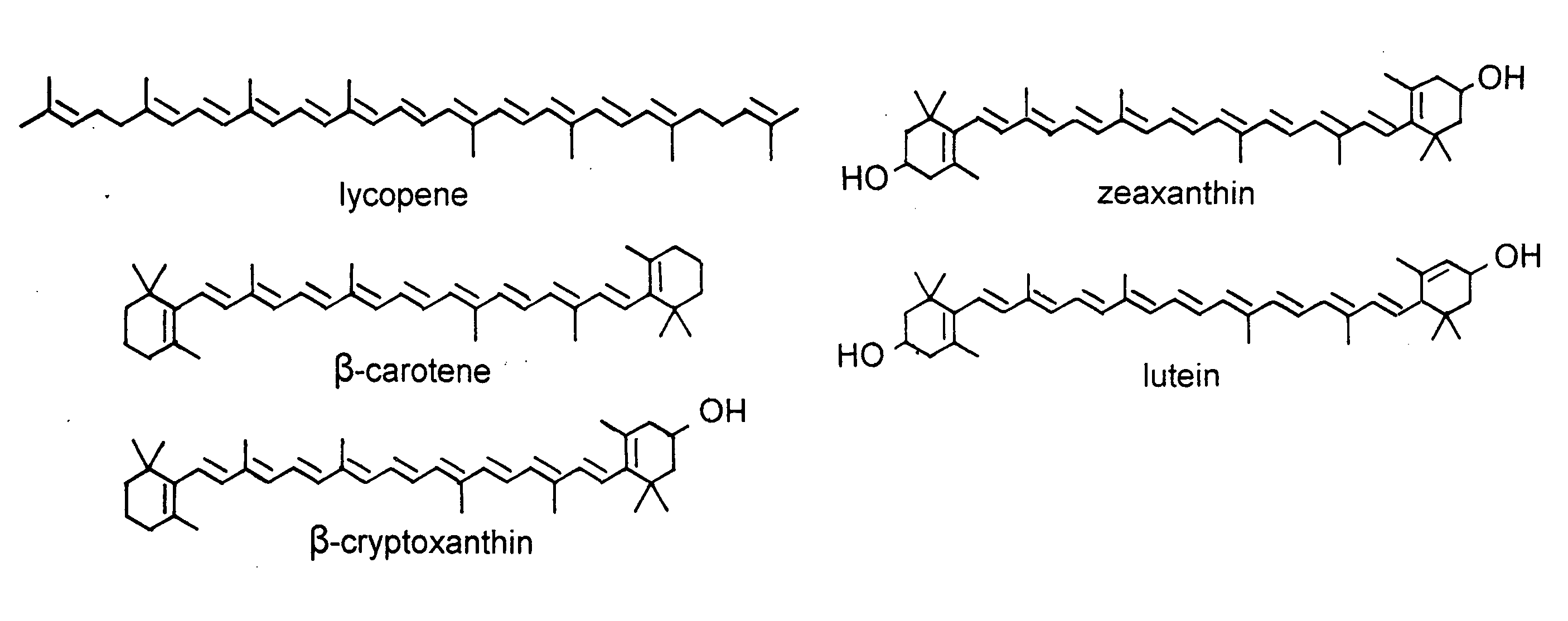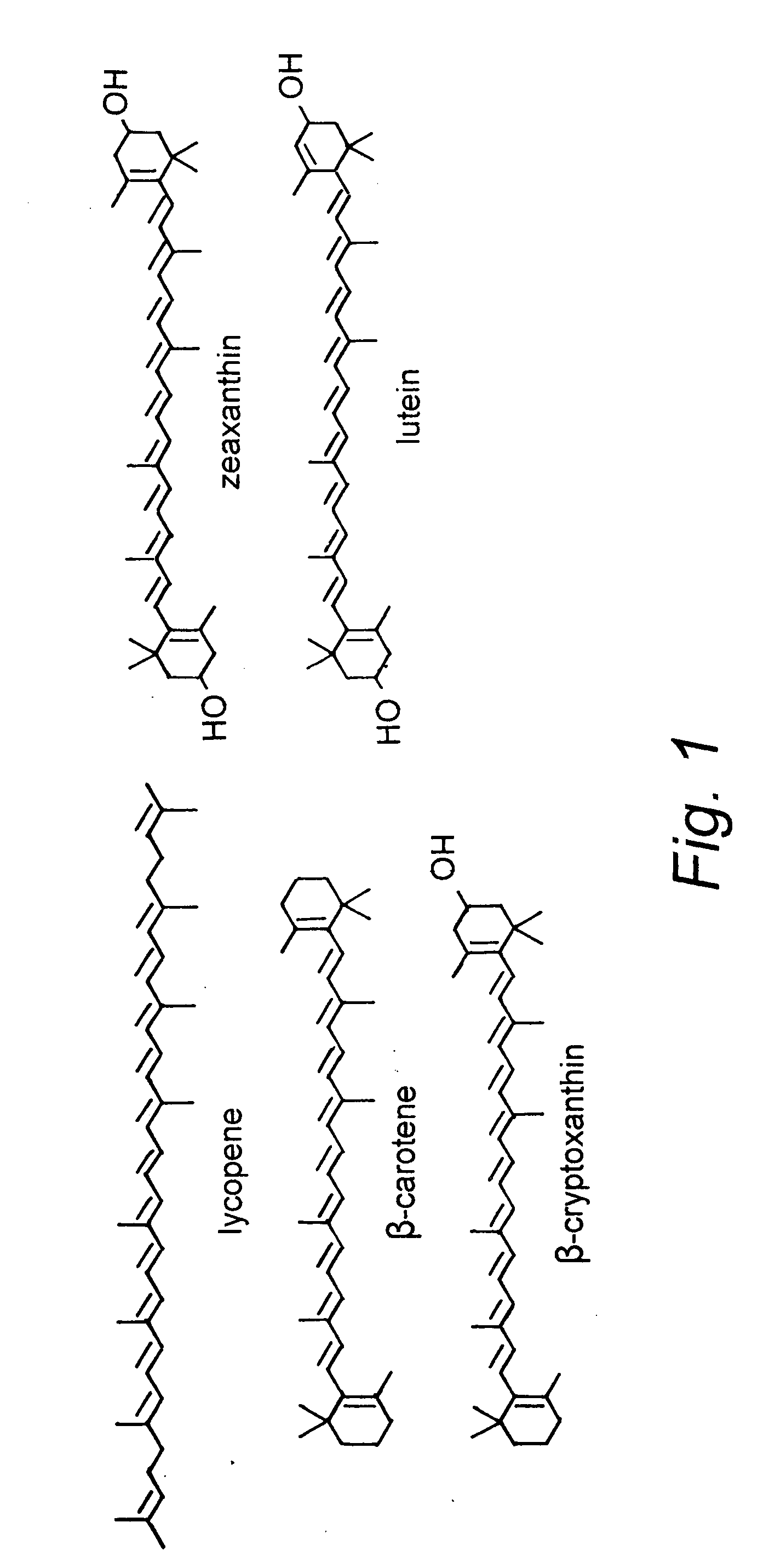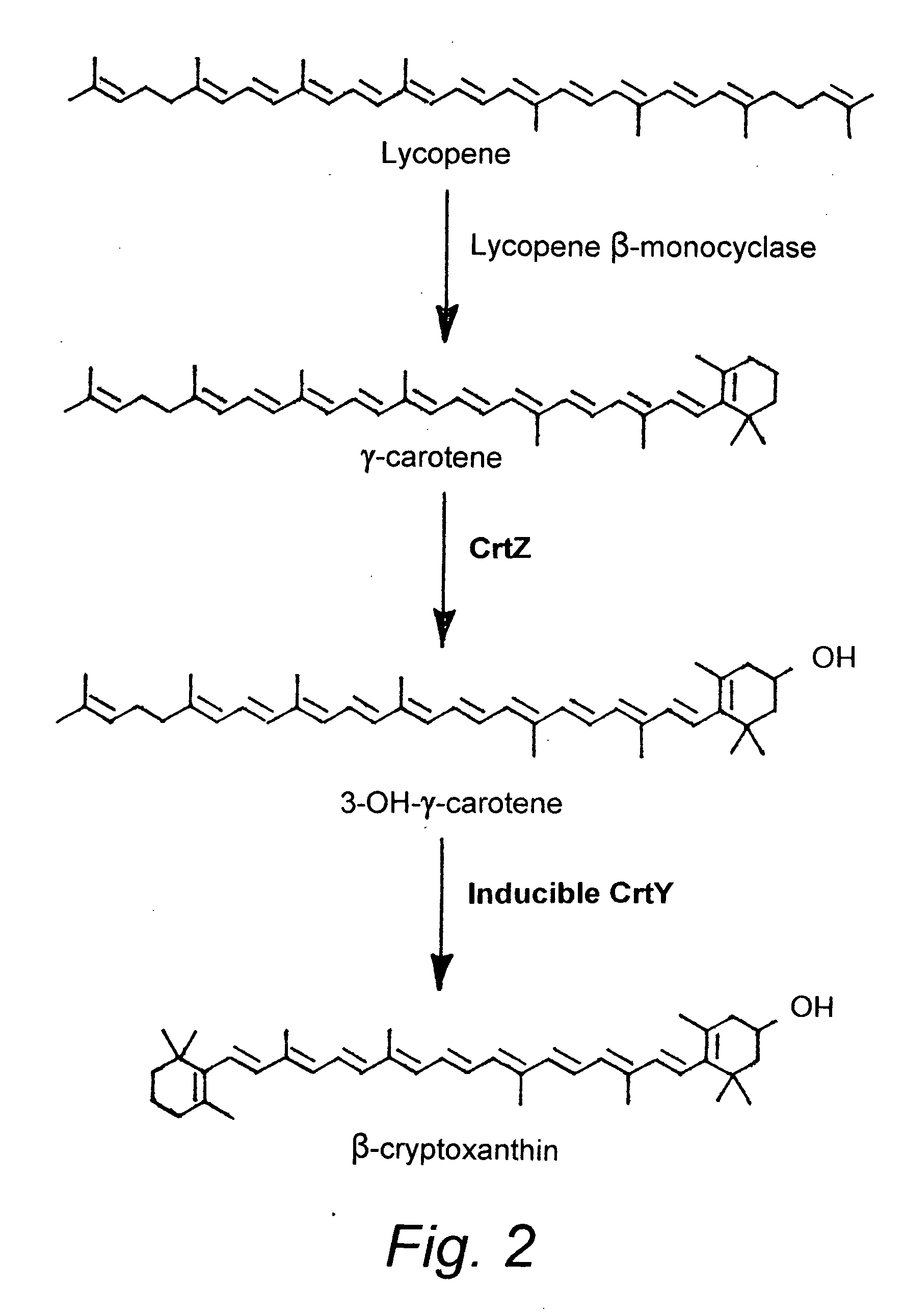Beta-cryptoxanthin production using a novel lycopene beta-monocyclase gene
a beta-monocyclase and gene technology, applied in the field of carotenoids, can solve the problems of insufficient production level for commercial production of -cryptoxanthin, and insufficient production level for -cryptoxanthin production
- Summary
- Abstract
- Description
- Claims
- Application Information
AI Technical Summary
Benefits of technology
Problems solved by technology
Method used
Image
Examples
example 1
[0072]Materials. All reagents were of the highest purity available and were purchased from Sigma (St. Louis, Mo.) Aldrich (Milwaukee, Wis.), and Fisher Scientific (Pittsburgh, Pa.) unless otherwise noted. PCR primers were purchased from Integrated DNA Technologies (Coralville, Iowa). Pfu DNA polymerase (Stratagene, La Jolla, Calif.), Taq DNA polymerase (Fisher), and FailSafe™ PCR enzyme mix (Epicentre, Madison, Wis.) were used in PCR reactions. Restriction endonucleases were purchased from Invitrogen (Carlsbad, Calif.), New England Biolabs (Beverly, Mass.), and Fermentas (Hanover, Mass.). Fast-Link™ DNA ligation kit was purchased from Epicentre. γ-carotene was purchased from Carotenature (Lupsingen, Switzerland).
[0073]Bacterial strains and plasmids. The bacterial strains and plasmids used in this study were listed in Table 1.
[0074]Genomic DNA preparations. Deinococcus geothermalis DSM 11300 was grown in Degryse medium 162 [Ferreira A. C., Nobre M. F., Rainey F. A., Silva M. T., Wait...
example 2
[0091]Materials. All reagents were of the highest purity available and were purchased from Sigma (St. Louis, Mo.) Aldrich (Milwaukee, Wis.), and Fisher Scientific (Pittsburgh, Pa.) unless otherwise noted. Polymerase chain reaction (PCR) primers were purchased from Integrated DNA Technologies (Coralville, Iowa). Pfu DNA polymerase (Stratagene) was used in PCR reactions. Restriction endonucleases were purchased from Invitrogen (Carlsbad, Calif.), New England Biolabs (Beverly, Mass.), and Fermentas (Hanover, Mass.). Fast-Link™ DNA ligation kit was purchased from Epicentre (Madison, Wis.).
[0092]Bacterial strains and plasmids. The bacterial strains and plasmids used are listed in Table 4.
TABLE 4Bacteria and plasmids.Reference orBacteria or plasmidsGenotype and descriptionsourceBacteriaE. coli XL-1 blueHost for regular cloning;StratagenerecA1 endA1 gyrA96 thi-1 hsdR17 supE44 relA1 lac[F′ proAB lacIqZΔM15 Tn10 (Tetr)]E. coli JM109Host for expression of carotenoid biosynthetic genes;Yanish ...
PUM
| Property | Measurement | Unit |
|---|---|---|
| Temperature | aaaaa | aaaaa |
| Fraction | aaaaa | aaaaa |
| Fraction | aaaaa | aaaaa |
Abstract
Description
Claims
Application Information
 Login to View More
Login to View More - R&D
- Intellectual Property
- Life Sciences
- Materials
- Tech Scout
- Unparalleled Data Quality
- Higher Quality Content
- 60% Fewer Hallucinations
Browse by: Latest US Patents, China's latest patents, Technical Efficacy Thesaurus, Application Domain, Technology Topic, Popular Technical Reports.
© 2025 PatSnap. All rights reserved.Legal|Privacy policy|Modern Slavery Act Transparency Statement|Sitemap|About US| Contact US: help@patsnap.com



